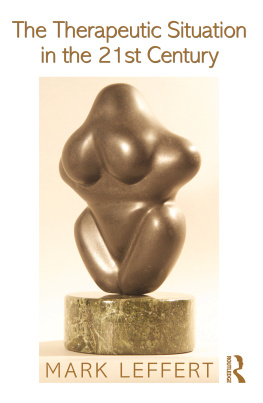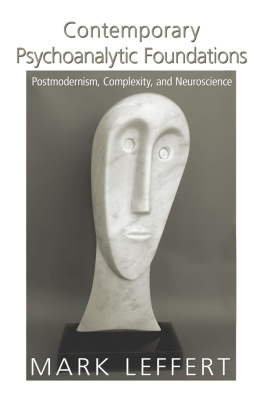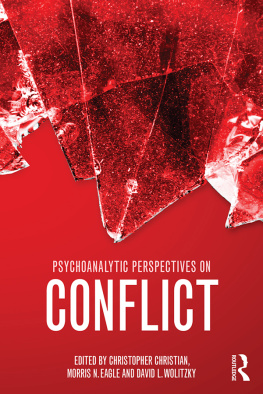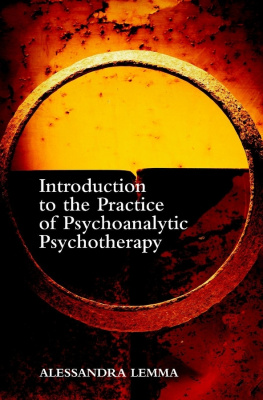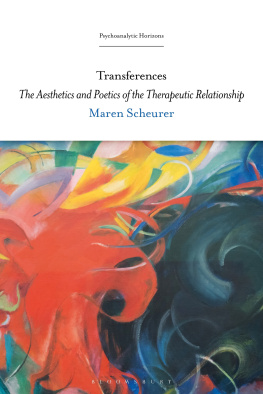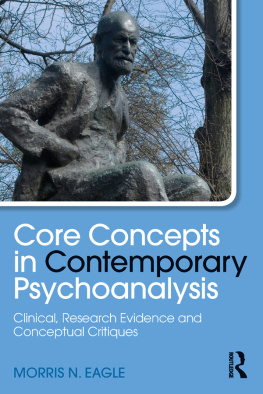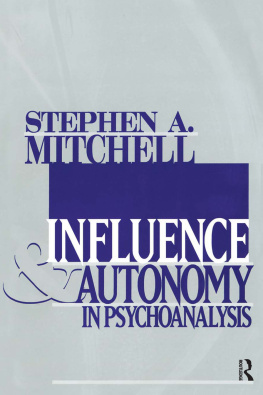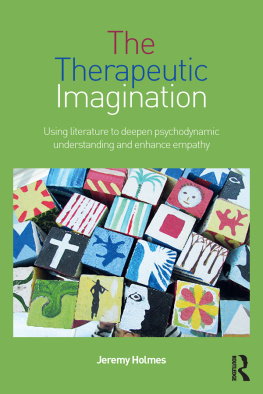The Therapeutic Situation in the 21st Century
Mark Leffert
First published 2013
by Routledge
711 Third Avenue, New York, NY 10017
Simultaneously published in the UK
by Routledge
27 Church Road, Hove, East Sussex BN3 2FA
Routledge is an imprint of the Taylor & Francis Group, an informa business
2013 Taylor & Francis
The right of Mark Leffert to be identified as author of this work has been asserted by him in accordance with sections 77 and 78 of the Copyright, Designs and Patents Act 1988.
All rights reserved. No part of this book may be reprinted or reproduced or utilized in any form or by any electronic, mechanical, or other means, now known or hereafter invented, including photocopying and recording, or in any information storage or retrieval system, without permission in writing from the publishers.
Trademark notice : Product or corporate names may be trademarks or registered trademarks, and are used only for identification and explanation without intent to infringe.
Library of Congress Cataloging in Publication Data
Leffert, Mark.
The therapeutic situation in the 21st century / Mark Leffert.
p.cm.
Includes bibliographical references and index.
ISBN 978-0-415-88335-1 (hardback) ISBN 978-0-415-88336-8 (paperback)
ISBN 978-0-203-84473-1 (e-book) 1. Psychotherapy. I. Title.
RC475.L44 2012
616.8914dc23
2012008551
ISBN: 9780415883351 (hbk)
ISBN: 9780415883368 (pbk)
ISBN: 9780203844731 (ebk)
Typeset in Minion
by RefineCatch Limited, Bungay, Suffolk
Contents
| Self-Perception, Self-Representation, and Cohesion of Self |
In a previous book, Contemporary Psychoanalytic Foundations (2010a), I offered a basic science approach to psychoanalysis at the beginnings of the 21st century. I discussed the relationship of the modern to the postmodern, the advent of neuroscience, and the role of complexity theory in the psychoanalytic endeavor. I also argued that all of these broad areas could be used interreferentially to inform each other and our understanding of the psychoanalytic situation. Such thinking had not found much of a place in psychoanalytic thought or that of the people working in these disparate disciplines. I used tools derived from an exploration of these areas and their interrelatedness to study a number of issues with which psychoanalysis has struggled with only limited success during its long existence. In particular, I looked at consciousness, unconsciousness, memory, power relations in psychoanalytic organizations, and therapeutic action.
However, one thing that Contemporary Psychoanalytic Foundations did not attempt to offer was any sort of consistent approach to clinical psychoanalysis, to the therapeutic situation if you will. In that area, it did not go beyond offering a radical critique of the standing of individual named metapsychologies. I plan to offer the beginnings of such an approach here, a rudimentary textbook of clinical psychoanalysis in a different language.
In the still early days of Relational Psychoanalysis and Intersubjectivity Theory, , in volume 2 of Psychoanalytic Dialogues (of which he was the first editor), offered the observation that:
In [his] view, the battle against orthodoxy has been largely won; the real vitality and creativity in the field have shifted to efforts... to develop postclassical, broadly relational approaches to mind, development, and the analytic situation. Because the battle has been won, it is now less interesting to recount the deficiencies of the classical model than to explore the subtle but quite important differences among postclassical perspectives.
(p. 43)
I would suggest that neither of the assertions made in this perfectly reasonable sounding introduction to Mitchells paper is correct. They fail in a general way because the battle against orthodoxy has not been so much won as elided: Orthodoxy, despite its serious deficiencies, does continue to have things to offer psychoanalysis, even relational psychoanalysis, and the differences among postclassical perspectives, while undoubtedly real, are perhaps, when all is said and done, in 2011, not so important after all. The secular problem with Mitchells paragraph and its assertions is greater still and lies in the fact that he continues to position the development of psychoanalysis as determined by the changing outcomes of dueling metapsychologies. The evolutionary course of psychoanalysis still follows from the prioritizing of protagonists and the outcome of the struggle, civilized by a shift in metaphor from battles being won to subtle differences being explored.
Of course, authors developing and elaborating the theory and technique of psychoanalysis have always done so while working within the framework of some metapsychology. They have achieved, over the decades, major therapeutic advances and both learned and understood much about psychological functioning and psychopathology. We continue to use many of their ideas and discoveries in our clinical work with patients. Mitchells work under the broad relational umbrella and the narrower umbrella of the Relational School) formulation that metapsychology is not psychology and that there are in fact two psychoanalytic theories, a powerful clinical one and a dubious metapsychological one, I would answer both of those questions in the affirmative. What will be offered here has been formulated outside of and independently of any metapsychology.
Looking back over perhaps the past 20 years, I gradually became aware that metapsychology, of whatever denomination, had essentially disappeared from my clinical work as well as my thoughts about that work. (I have no way of knowing how true this is for other analysts and psychotherapists, or whether this disappearance is in fact what lies behind some describing themselves as eclectic.) I remained bilingual, however, able to speak or teach most metapsychology as circumstances warranted. An attendant change was that I no longer identified myself with the signifier of a named school to other professionals who did not know me or to informed lay people whom I met socially and who asked about my occupation. I was surprised to find that my unwillingness to safely identify myself as (metapsychologically) Freudian, Relational, or whatever, was often met by anxiety rather than interest. Whats in a name is safety, apparently, and they would not take no for an answer. This is not a safe book; in the best postmodern sense, it is subversive. It implicitly and at times explicitly offers a radical critique of psychoanalysis as it is thought about and to a lesser extent how it has been practiced.
What I have retained, for lack of a better term, is an ontology of the clinical situation. For example, I continue to interpret defense (or not, as circumstances dictate) but I did not retain metapsychological ego psychology as a basis for doing so. Or, I will help a patient internalize their experience of my normative failings and imperfect self, and metabolize the ensuing small narcissistic injuries without reference to any concept of a bipolar self, or any psychological construct of a self. Transference remains a cornerstone of the clinical experience but, as will be talked about in , it is a much more complex and nuanced one than is generally acknowledged.
This book, picking up where I left off in 2010 with Contemporary Psychoanalytic Foundations , develops and explores a clinical psychoanalysis, a psychology in Gill and Holtzmans () terms, free of metapsychology. This is not to say that it is atheoretical; it draws on a wide range of interdisciplinary studies and creates theory of its ownbut it is not meta-theory and makes no such claims. The book is organized around six short monographs or long chapters addressing areas of fundamental importance to the therapeutic encounter, followed by an essay that attempts to take stock of where we find ourselves. I stress at a number of points (perhaps too many) that this is a preliminary effort. It is not meant to be all-inclusive, but as I hope the text will demonstrate, it addresses areas of great relevance to clinical work that are seldom thought of in connection with it, and offers a systematic approach to navigating them.

